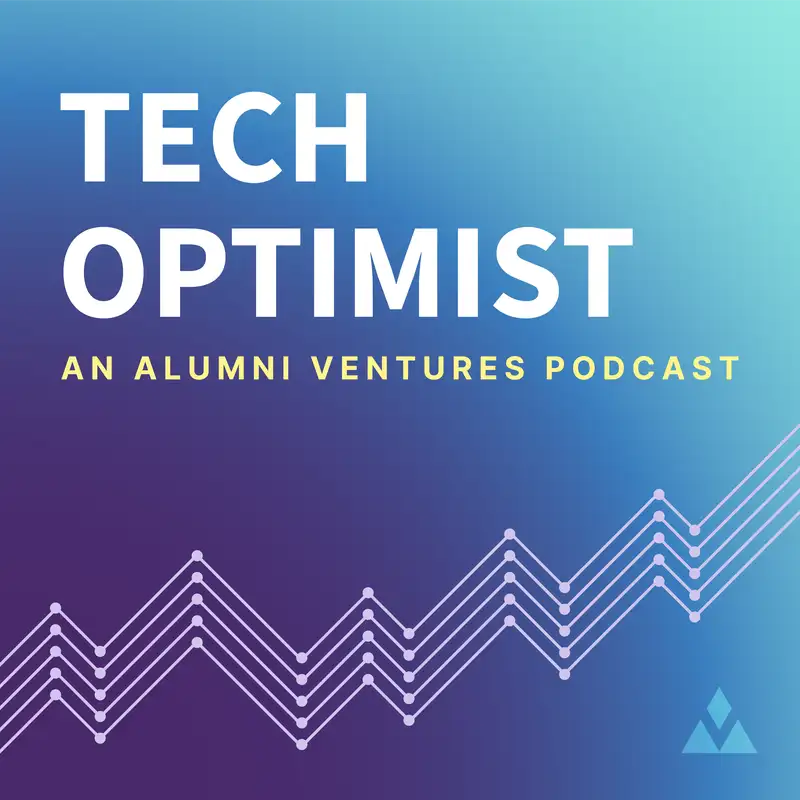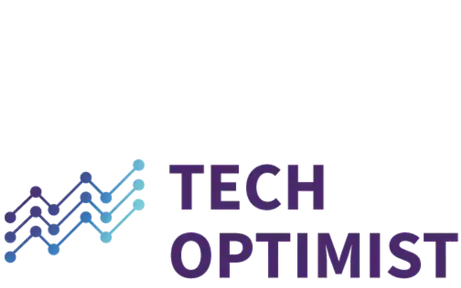#20 - Three Breakthroughs: Nuclear Is Back, Non-GMO Rice Innovation, and a Radical Approach to Antibiotic Discovery
Sam:
Hey, I am Sam, the footnote writer for this show. And today we're talking about rice, a nuclear reactor in Wyoming and woolly mammoths. This is the Tech Optimist.
Matt Caspari:
It's about half the world's population relies on rice as their primary source of calories.
Mike Collins:
I think the tide has turned in public sentiment about the role of both fusion and fission, and they call what they're doing molecular de-extinction. And if you really look at the next big problem, this is on the list.
Sam:
In a world captivated by criticism, it's easy to overlook the groundbreaking technologies shaping our future. Let's a light on innovators who are propelling us forward. As the most active venture capital farm in the US, we have an exceptional view of tech's real world impact. Join us as we explore, celebrate, and contribute to the stories of those creating tomorrow. Welcome to the Tech Optimist.
As a reminder, the Tech Optimist podcast is for the informational purposes only. It's not personalized advice and it's not an offer to buy or sell securities. For additional important details, please see the text description accompanying this episode.
Mike Collins:
Okay. Welcome to the Tech Optimist Podcast, our three breakthroughs segment where we identify what we think are three things that could potentially change the world that have happened over the last week or two. And so I'm joined today by Matt Caspari, one of our managing partners. Matt, before we kick off, why don't we tell the audience, why don't you introduce yourself and a little bit about your background and what you do at AV.
Matt Caspari:
Yeah, great. Well, excited to be here with you today, Mike. So Matt Caspari, I'm the managing partner of our UC Berkeley Centric Fund, Strawberry Creek Ventures. I'm also involved in managing our deep tech fund. I've been around the venture landscape for over 20 years. Started as an entrepreneur, started a venture-backed company at Berkeley based on some technology we licensed from the university. So I have a lot of founder empathy and come at this with an entrepreneurial point of view and have been with Alumni Ventures for over three years. So super excited to be backing entrepreneurs, really with impactful technologies, which I think we're going to get into some of that today.
Mike Collins:
Yeah, excellent. So Matt, I think you drew the short straw, so you get to go first today.
Matt Caspari:
This is a long straw, Mike. This is good. Yeah, so excited to talk. Actually, a scientific study that I came across that came from some Berkeley researchers. So go Bears.
Mike Collins:
A little bias.
Matt Caspari:
Yeah, it was published in a journal called Scientific or Science Advances, and it was just last week that it came out. So these scientists used CRISPR, Cas-IX mutagenesis to edit the sequences of rice.
Sam:
Here Matt is referencing a paper that was published by Scientific Advance. I am not a scientist myself and I am not an engineer, but I'm going to read a bit of the abstract from the paper that was published. I feel like scientists and engineers obviously can understand what I'm saying a bit more, and I will help break down what all of this means a little bit later. But I figured I would provide a little bit of the abstract. So here are a few snippets from the abstract of that paper as a little nod to all of you scientists out there that are listening to this show.
Understanding CRISPR Cas-IX capacity to produce native over-expression, OX alleles would accelerate agronomic gains achievable by gene editing. To generate OX alleles with increased RNA and protein abundance we leveraged multiplex CRISPR Cas-IX mutagenesis of non-coding sequences upstream of the rice PSBS-I gene. We isolated 120 gene edited alleles with varying non-photochemical quenching capacity in vivo from knockout to over expression using a high throughput screening pipeline. And then I'm going to hop down to the last two sentences of the abstract. Our results may inform future gene editing strategies for hypermorphic alleles and have advanced the pursuit of gene edited non-transgenic rice plants with accelerated relaxation of photoprotection.
Matt Caspari:
So in simple terms, for those who aren't familiar, they used a really precise sophisticated method to edit the genome of rice. And they actually did it in a way without using foreign DNA, so they did not take genes from another organism and put it into the rice. So this means that this is not GMO or genetically modified rice by the FDA's definition. So I'll talk a little more about what they did and then why this matters, why I think it's an interesting breakthrough. So they went into the rice's, DNA, played around with it, and they were able to get a specific gene to increase its expression. What does this mean or matter? The rice is actually more resistant to environmental stress. It has better photosynthetic efficiency, which could give you higher yields. The non-GMO thing I think is critical. So I looked at food crops in the US. I knew we planted a lot of GMO crops here, but it turns out 92% of our corn, 94% of our soybeans in the US are GMO.
In the rest of the world there's a lot less acceptance to GMO crops, and you do have concerns in the US from a lot of people around GMOs. So what does this create? It creates an environment where it's very costly and it takes a lot of time to get a new crop into the market. So Bayer, which has a big business in this area, put out some information 16 years and over a hundred million in R&D to get a new GMO crop approved. And again, there's a lot of places in the world that aren't going to accept it, even if it passes the FDA standards. So these researchers, by being able to go in and change the properties of this rice, but doing it in a non-GMO way, you're now looking at a regulatory pathway that should be much, much simpler, much wider acceptance. And to get into a little more of why do we care? Climate change, the world is getting warmer.
When I talk about environmental stress, I'm talking about drought, I'm talking about heat. Photosynthetic efficiency is something really interesting. You're talking about energy coming into the rice crop and if you can convert more of that energy, you can get higher yields. If a farmer plants a hectare of rice, you're getting more out. And when I looked into, I knew rice was critically important as a staple of food, but it's about half the world's population relies on rice as their primary source of calories. So I think this has the potential to be a really big breakthrough where we can create more food security around rice and hopefully also increase yields and do it in a way where we're not going to get pushed back around the way we create improved crops today, which is GMOs.
Sam:
As promised, I'm back to break down this paper and this big discussion that Matt and Mike are having here. So I use an AI service to help break down this document for me, this scientific paper. Obviously as you know, me not being a scientist, I don't quite know how to translate any of this stuff, but the AI does. So this is what the AI provided. It was actually kind of funny. I left a prompt there that said, "Please summarize this document as if a third-grader could understand it." So this is what it spit out, and I completely understand the work they did now. So the scientist in the document used a tool called CRISPR-Cas-NINE, that changed specific parts of a rice plant's genetic code. They focused on a gene called PSBS-I to see how changing it could make the plant better at protecting itself from too much sunlight.
By making these changes, they were able to increase the amount of a protein called PSBS in the plant, which helped the plant protect itself better from sunlight. They found that these changes could be made without adding any new genes to the plant, which is important for creating new types of rice plants without using traditional genetic modification methods. And so I figured it would be really impactful to share this in my little footnote here of the podcast, to just get everyone on the same page and have everyone else understand how impactful, how important and how innovative this find was. So I hope you enjoyed this footnote, and there will be a few more down the road, but let's hop into Mike's next breakthrough.
Speaker 4:
Want to help drive America's technological edge alumni? Ventures U.S Strategic Tech Fund gives you access to startups, pioneering innovations that will shape the strategic technologies of our nation from cutting-edge artificial intelligence to cybersecurity and energy security. This is your chance to invest in the startups that are pushing the boundaries of what's possible. Visit AV.VC slash US strategic tech to get started.
Mike Collins:
Yeah, I mean, again, big picture, you talked about environmental changes, but I think we can all see that the world's changing from an environmental standpoint. And if you have a population just needing one of the three or four main carbohydrate crops, and if there's a drought that has huge impact on life and death really for people, it's literally a matter of life and death.
Matt Caspari:
[inaudible 00:11:01] half a billion people. This is the primary source of calories and there's no GMO rice out there in the world. I mentioned that the major crops in the US, people have looked at creating GMO rice in the past. There was this golden rice that was out there, and there's just massive pushback from people and just a lot of concerns around you're taking DNA that would never get into this organism and putting it in. I don't know if I'm comfortable with that. So yeah, I think this could be a big deal.
Mike Collins:
And I do think the understanding of these technologies I also think is really an option as if there is a fungus that begins to start wiping out one of these crops kind of thing, our ability to in and create a fungus resistant version of it. I just really like the fact that scientists and our understanding of, and the use of technologies like CRISPR, we've talked about even on the show, some other interesting companies that are looking at how do you make it more water efficient? How do you make it more drought resistant? How do you increase the hardiness and density and all of that kind of stuff, I think is, that's a great one. So I'm going to hop in with mine. And so this is related to our good friend Bill Gates and Wyoming Coal country getting a nuclear reactor. And so just again, this is a state-of-the-art plant. I think it's something like, what is it, 350 megawatts that could potentially go up to 500 million. I think the tide has turned in public sentiment about the role of both fusion and fission.
That it's an and solar and renewables, and we're going to have to not turn our back immediately on carbon fuels. That the history of society has really been driven by energy and energy innovation. And we're talking about a lot in our world and on this show about breakthroughs going on in AI and super energy intensive, and you're going to have a Nvidia farm that's going to require the energy equivalent of the nuclear power plant to run it. So I think, again, I just think the story of civilization is about energy. You can look at it through this lens, and I do think we have exciting new technologies, but I also think that we have to do it all. And yes, we want to do it responsibly. Yes, we want to have government oversight and regulation, but we can't say no, never, not in my backyard if we're going to continue to move the ball forward. I think groundbreaking on this plant is long overdue.
Matt Caspari:
I think you're right. We are seeing a change in acceptance and willingness in the us, which is great, and we do need all of it. There's this big transition of electrifying the grid, moving to solar and wind. Again, there are challenges with that. We need as many solutions as we can come up with to have low carbon or no carbon energy. So I like that one. It's great. Exciting.
Sam:
So this company that Bill Gates started in 2008 is called TerraPower. Bill Gates Co-founded it in 2008, and it's an innovative nuclear energy company aimed at advancing nuclear technology to provide safe, abundant, and carbon-free energy. The company is currently working on a groundbreaking project in Kemmerer, Wyoming, where it plans to build an advanced nuclear power plant featuring a sodium cooled fast reactor design known as the Natrium reactor. So some key features of TerraPower's Natrium reactor, a sodium cooled fast reactor. So unlike traditional reactors that use water for cooling, the Natrium reactor uses liquid sodium, which allows it to operate at lower pressures and higher temperatures, enhancing safety and efficiency. It also has molten salt energy storage. I had never heard of this. And so pretty much what it is the reactor includes a molten salt based energy storage system, which can increase its power output from 345 megawatts to 500 megawatts for over five hours, providing flexibility and reliability in just general power generation.
Also, as a super interesting fact here with the type of fuel that it uses. So this reactor uses high assay, low enriched uranium fuel, which is enriched to a higher percentage of uranium 235 than conventional reactor fuel offering improved performance and efficiency, which I also thought was pretty cool. Some really sciency, geeky, nerdy facts there for you, but I thought they were interesting. And in general, I just want to put out there that the project goals and impact of TerraPower are carbon-free energy. And so the aim to provide a reliable source of carbon-free electricity, which is crucial for reducing greenhouse gas emissions and combating climate change and some of their economic and climate goals. I mean, the project is expected to meet increasing electricity demands and support economic growth while addressing climate goals for providing a stable and sort of clean energy source.
And then this is also a big step for industrial applications. So future reactors can be built near industrial plants to supply high heat for processes such as hydrogen production, petrochemicals, ammonia, fertilizer manufacturing, which all currently rely on fossil fuels. So overall, TerraPower seems to be doing some really innovative, fantastic stuff for this realm of energy production. And I wanted to dig into a little bit and provide another footnote for that. So I hope you enjoyed, but then let's get back into the episode.
Speaker 5:
Ever wonder how the ultra wealthy invest their money? They often back startups before they go public through venture capital. Now individual investors like you can too with Alumni Ventures, visit av.vc to get started.
Mike Collins:
What's your third one?
Matt Caspari:
Okay, so the next one, I have also been reading more scientific articles. So this one came out in Nature Biomedical Engineering just last week from a team of researchers at University of Pennsylvania. This one caught my eye. I thought it was actually pretty cool. So what these researchers did, they talk about having this deep learning enabled approach to antibiotic discovery. So again, we're talking about AI ML and they call what they're doing, molecular de-extinction.
Mike Collins:
Okay, what the heck's that?
Matt Caspari:
Yeah, exactly. What is that? So this is where it gets cool. This is reviving ancient molecular structures from extinct organisms and seeing if these ancient structures can solve modern day problems like antibiotic resistance. So what they actually did was they identified over 37,000 different peptide sequences, and these came from over 200 extinct species. And these were things like the woolly mammoth, an ancient sea cow, a giant elk, and then they took the next step and they actually synthesized and made 69 of these peptides and tested them against bacterial pathogens and many oh of them showed.
Mike Collins:
Oh, I love this. I love this.
Matt Caspari:
Yeah, it's so cool.
Mike Collins:
It's so cool.
Matt Caspari:
It's wild. And many of them showed really strong effects and it even gets kind of cooler, is they looked at the mechanism of action and found that the way that most of these work is just a different mechanism of action of how our known antimicrobials work today. So you're talking about a whole other new strategy to combat bacterial infections. And I knew this antibiotics is a big issue, but looked into it a bit more. World Health Organization says that this is one of the top public health and development threats, over a million deaths per year, and the projections get pretty scary if we don't find some new solutions. So yeah, I think this one's super exciting.
Mike Collins:
Again, putting that in context, just one of the great discoveries of the 20th century, and again, my wife does genealogy, you go back and the number of people that died of abscess tooth or something like this that we scoff at. And if you really look at the next big problem is this is on the list-
Matt Caspari:
[inaudible 00:21:10].
Mike Collins:
Expensive. And I just love this idea, which I had not heard about, of going back into pre-industrial times when it was really pure Darwinism that kept, how does the wooly mammoth live to reproduce? There was no finesse. And so the fact that you go to the prior species that are now extinct and looked at them and what they were doing and how they, and learning from it and borrowing from it and sequencing it, I think is very clever, very interesting.
Matt Caspari:
I love this one.
Mike Collins:
And again, just I love this one all hands on deck to more tools, more pathways, more approaches, just the nature of science, the nature of us is there's always shit to take care of and you got to try to stay ahead of it. And so really a good one. And so we'll put again, some background information, some show notes for people that want to read more, read the original articles, but it was fun. I look forward.
Matt Caspari:
Yeah, this is great.
Mike Collins:
Matt and I'll be doing this over the next month or two. Our plan is to rotate it around the AB team. And so Matt, we'll do it again next week. Thank you.
Matt Caspari:
See you next week, Mike. Take care.
Mike Collins:
All right, have a good one.
Matt Caspari:
You too.
Mike Collins:
Bye.
Sam:
Thanks again for tuning into the Tech Optimist. If you enjoyed this episode, we'd really appreciate it if you'd give us a rating on whichever podcast app you're using and remember to subscribe to keep up with each episode. The Tech Optimist welcomes any questions, comments, or segment suggestions. So please email us at info at techoptimist.vc with any of those and be sure to visit our website at ab.bc. As always, keep building.








